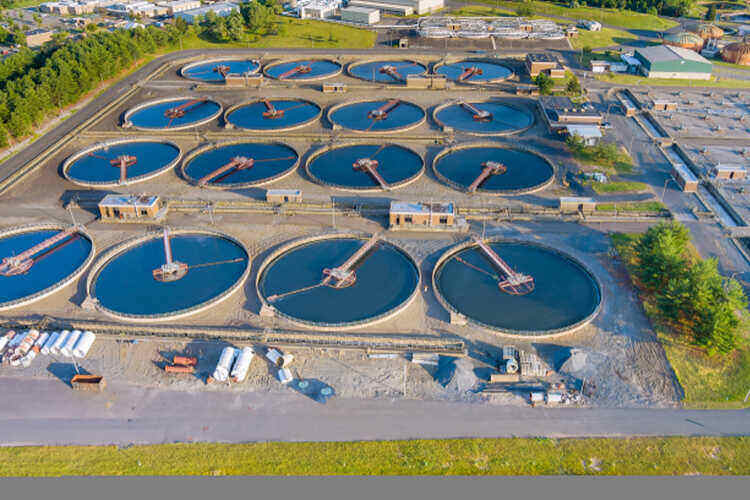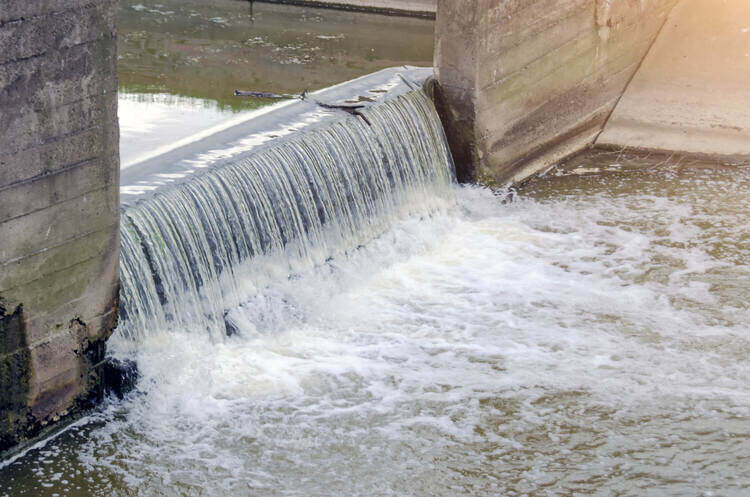Advanced oxidation has been around for quite some time and has proven its usefulness in water and wastewater treatment applications. Optimizing its use is continuously being studied, but there are already existing technologies that make it scalable for industrial and commercial use.
This article discusses the benefits of advanced oxidation in various applications and its advantages over other water and wastewater treatment processes. I will also talk about the importance of scalability of AOP treatment processes to industries and why advanced oxidation is the choice of many for treating tertiary water and wastewater.
How Industries Benefit From Advanced Oxidation Technologies
Listed below are the advantages of the advanced oxidation process that can be highly beneficial for industrial and commercial use:
Rapid reaction rates
The (hydroxyl) OH molecule has one of the fastest reaction rates among oxidants used in water and wastewater treatment processes. It has a high oxidation potential and has a non-selective nature, making it very versatile in a wide range of applications. Additionally, faster reaction rates translate to lower retention times, meaning water and wastewater can be treated quicker compared to conventional treatment processes such as chlorine or ozone.
Smaller land area requirement
Because of the fast reaction rate of advanced oxidation solutions, a smaller land area is needed to output the required flow rate of the system, including within tertiary industrial applications.
No new hazardous substances
A big issue with chlorine disinfection is the production of toxic byproducts after treatment. To reduce but not eliminate these byproducts from affecting the water supply, filtration to remove any organic compounds is required. This results in additional costs that may not be economical in large-scale applications.
While advanced oxidation processes also have byproducts, they’re easier to deal with. Bromate and excess peroxide can be removed through a well-designed advanced oxidation system. Advanced oxidation can also convert through oxidation organic components in the water into stable inorganic compounds like salt and carbon dioxide.
Versatile application
The highly reactive hydroxyl (OH) radicals in AOP solutions can deal with most organic materials in the water. They can remove the most common contaminants in the reactor vessel, including a few of the trace heavy metals often found in water supplies.
Disinfects the water
Advanced oxidation can be combined with UV disinfection to kill any pathogens that survive in the water. This saves time and cost because the process eliminates the need to add another step in water and wastewater treatment.
Deals directly with contaminants
The advanced oxidation process doesn’t treat water and wastewater by separating pollutants to have them treated in another phase. Other treatment processes create byproducts like sludge that need to be dealt with separately, further increasing the cost of operations.
Treatment solutions using membranes only produce concentrated waste contaminants that have to be dealt with separately since they merely filter pollutants from the water supply. On the other hand, advanced oxidation technology reacts with the organic pollutants and inorganic contaminants to reduce them to harmless compounds that are easier to manage. Overall, AOP decreases the concentration of the contaminants in the effluent.
The hydroxyl radicals in AOP solutions are non-selective. After the contaminants are broken down, they form intermediates that also react with oxidants and mineralize into more manageable compounds.
Other Industries That Can Benefit From Scaling Advanced Oxidation Systems

The production of pharmaceutical drugs results in byproducts that can contaminate drinking water and aquatic environments. Pesticide runoffs from farms get mixed into the freshwater supply. Personal care products are washed down the drain and go to wastewater systems that they are linked to. Landfill leachate that contains a toxic cocktail of chemicals can leak into groundwater sources.
Compounds of emerging concerns, specifically the byproducts from industries that deal with pesticides, pharmaceuticals, and personal care products, are recognized as potentially dangerous to natural water supplies. These contaminants have been detected in aquatic environments for years, but their numbers continue to rise at an alarming level as industries proliferate.
These contaminants and micropollutants are difficult to remove using conventional water and wastewater treatment processes. A more efficient tertiary treatment method is necessary and this is where the advanced oxidation process (AOP) can help.
The hydroxyl radical and reactive oxygen compounds in advanced oxidation technology are more powerful than almost all other oxidants found in other treatment processes. Its oxidation potential is twice that of chlorine as a disinfectant. It can reduce contaminant concentrations from hundreds of parts per million (ppm) to just a few parts per billion (ppb). Ozone, ultraviolet light, and hydrogen peroxide are the components often combined to create sufficient quantities of hydroxyl radicals for managing organic contaminants and inorganic pollutants in water supplies.
Why Advanced Oxidation Is The Best Solution
Numerous pollutants are tough to get rid of by biological, chemical, or physical means alone. Unfortunately, traditional treatment systems cannot completely remove these contaminants. The byproducts can have a long-term impact on the environment and the ecosystem in the affected areas.
A study shows that advanced oxidation offers a high removal percentage of these contaminants. Advanced oxidation solutions are effective in decontaminating water and wastewater sources of compounds that aren’t eliminated with conventional treatment & purification processes. AOPs are often added as a tertiary step to further treatment processes and reinforce existing filtration systems. This ultimately prevents the integration of emerging contaminants into the environment.
Augmenting existing treatment processes can be costly, regardless of the industry. The main problems with existing water and wastewater treatment systems are related to energy consumption, the complexity of chemical processes, and environmental footprint. All these are related to the cost of operations, which is the biggest factor in determining the scalability and efficiency of chemical treatment procedures.
Additionally, changing quality requirements can make it challenging to keep the cost of operations constant. The technologies, processes, and regulations will change over time, and these will impact the water quality needed by your facility. Oftentimes, the solution is to install additional equipment or augment facilities and processes to meet discharge regulations.
Advanced oxidation technologies are already being used at full scale for drinking water treatment and tertiary wastewater processing. Genclean Treatment Solutions, a division of Genesis Water Technologies is a trusted company offering scalable liquid AOP technology that can be applied to industrial, commercial, and municipal treatment applications.
How Can Advanced Oxidation Deal WIth Scalability Challenges

The main problem with the AOP process is the operating cost, but it can be resolved using several means.
Firstly, the integration of renewable energy is recommended. AOPs activated by UV not only can benefit from sun irradiation but also from the production of energy through solar power.
A study shows that adding a co-catalyst to AOP systems can reduce the amount of hydrogen peroxide and ferrous catalyst needed while preventing the formation of sludge. It’s an inexpensive way to catalyze reactions and reduce the development of byproducts that can be hard to deal with. Since there’s an increasing global need for clean water supplies, it’s critical to have a cost-effective solution like this to decontaminate polluted water sources.
While AOPs have a wide range of applicability, the treatment target should be specific and selective to reduce cost and optimize disinfection capacity. With this understanding, valuable elements like oxidants and catalysts will not be wasted without purpose.
Lastly, AOPs are best used in combination with traditional treatment technologies. AOPs alone cannot replace existing water and wastewater treatments from an economic standpoint. It is more cost-effective and feasible to integrate it into existing disinfection processes.
Genclean Scalable Advanced Oxidation Solutions

Genclean’s advanced oxidation disinfection solution is made to disinfect and remove both inorganic and organic compounds often found in water and wastewater sources. Genclean technology provides an NSF-certified, advanced oxidation (AOP) liquid solution that is non-toxic, does not require energy activation and is effective in a wide pH range for the oxidation and disinfection of small to large treatment plants.
Compared to other advanced oxidation treatment processes, Genclean products do not require an external catalyst. Our solution has the benefits of advanced oxidation plus it can provide protection to prevent recontamination of water sources. This greatly reduces the need for large capital investments or highly trained technicians, thus eliminating the problem of excessive energy costs often associated with the scalability of AOP solutions in mid size and larger treatment plants.
Altogether, our solution is more efficient, safer, and scalable. Our products don’t need the installation of complex external catalyst equipment or destruction equipment. They can be injected into the water stream using a GWT liquid chemical feed pump system with an integrated pH/ORP water treatment controller.
Scalability in water and wastewater treatment is all about the capacity of the system to handle large-scale applications while keeping costs of operation economical. Genclean products are easier to integrate and use compared to other AOP treatment solutions at scale. The scalability and versatility of Genclean products are outstanding with applications on cooling towers, domestic wastewater, utility drinking water, pools and water features, tertiary industrial wastewater oxidation, aquaculture and food and beverage facilities for disinfection of process water.
To learn more about our Genclean AOP treatment products, feel free to contact us.

